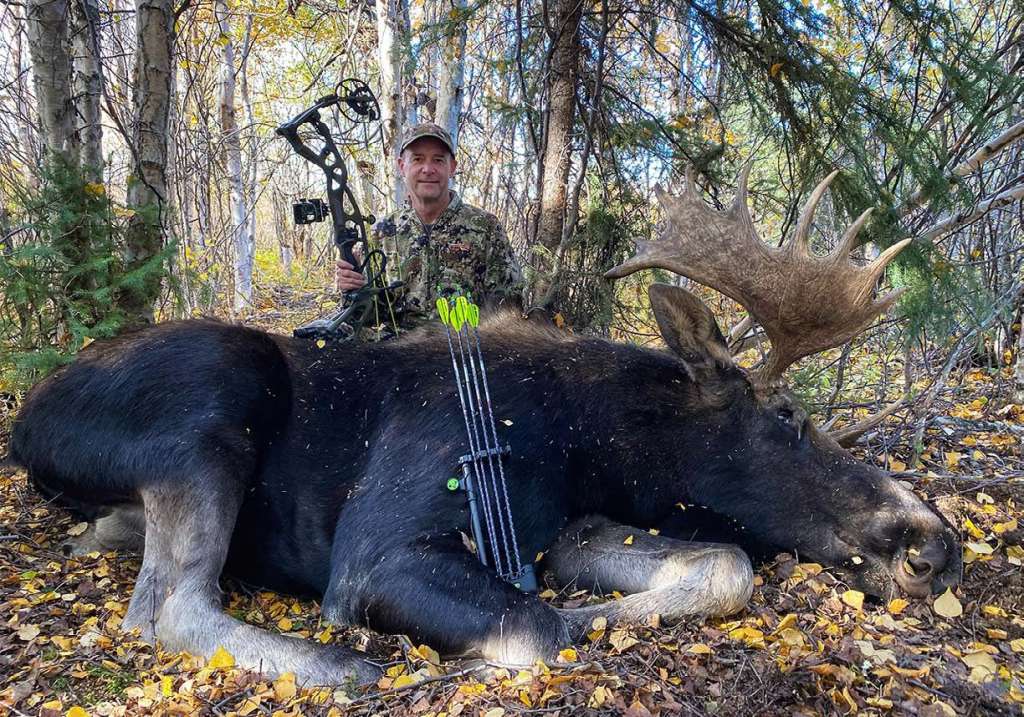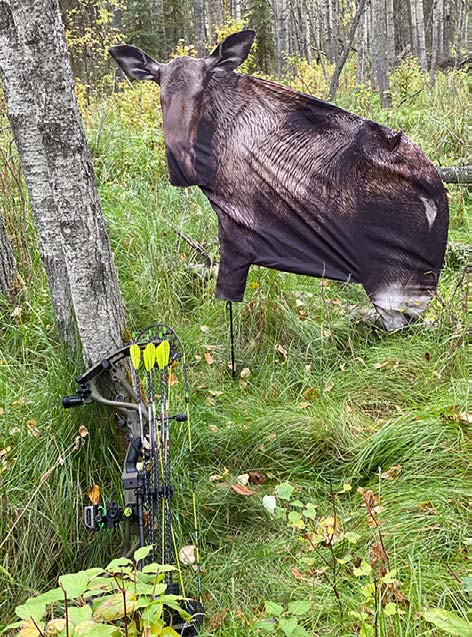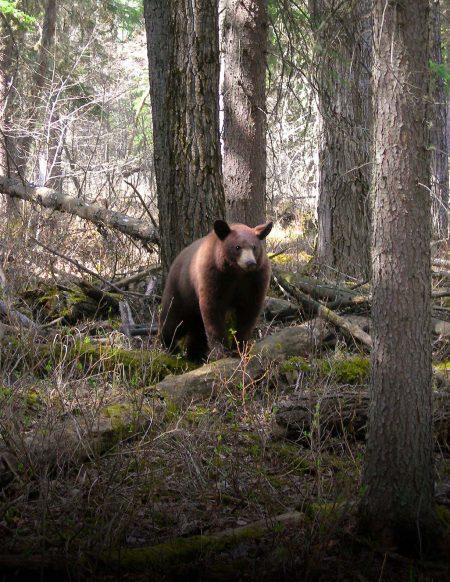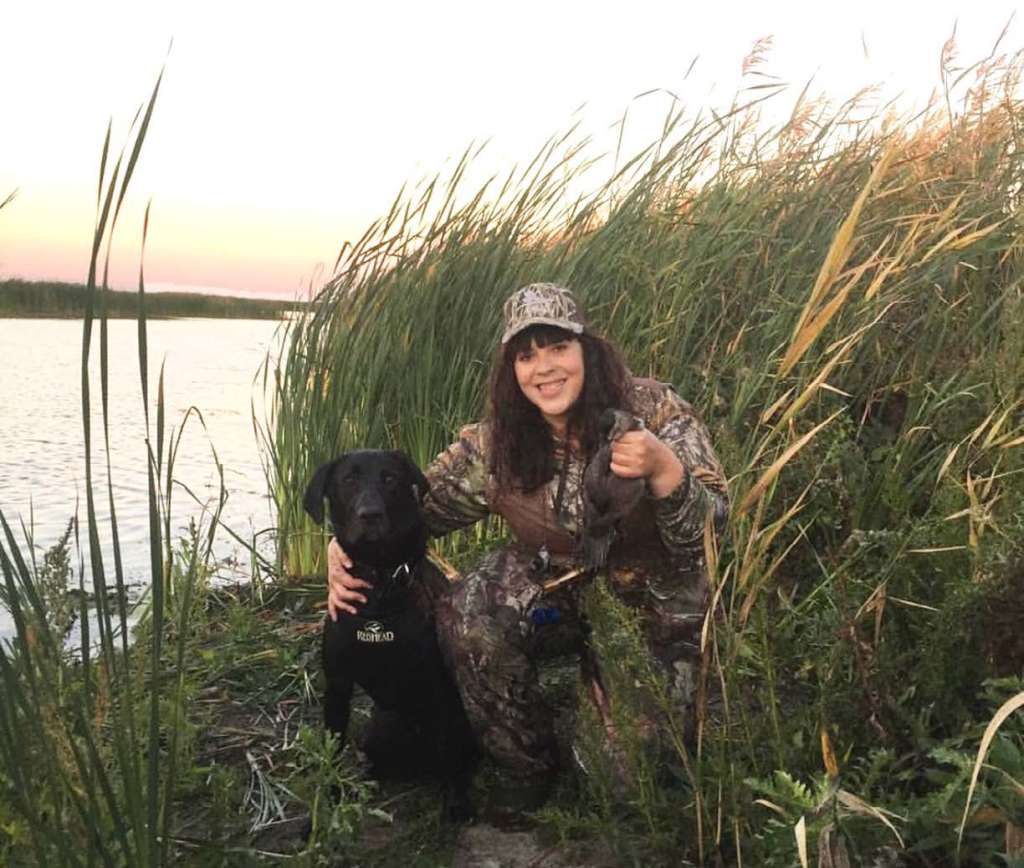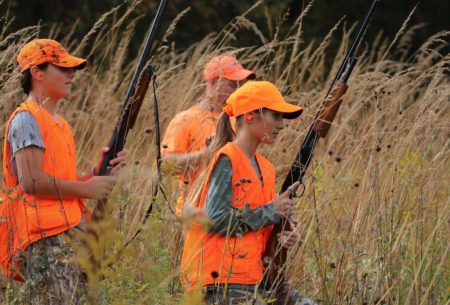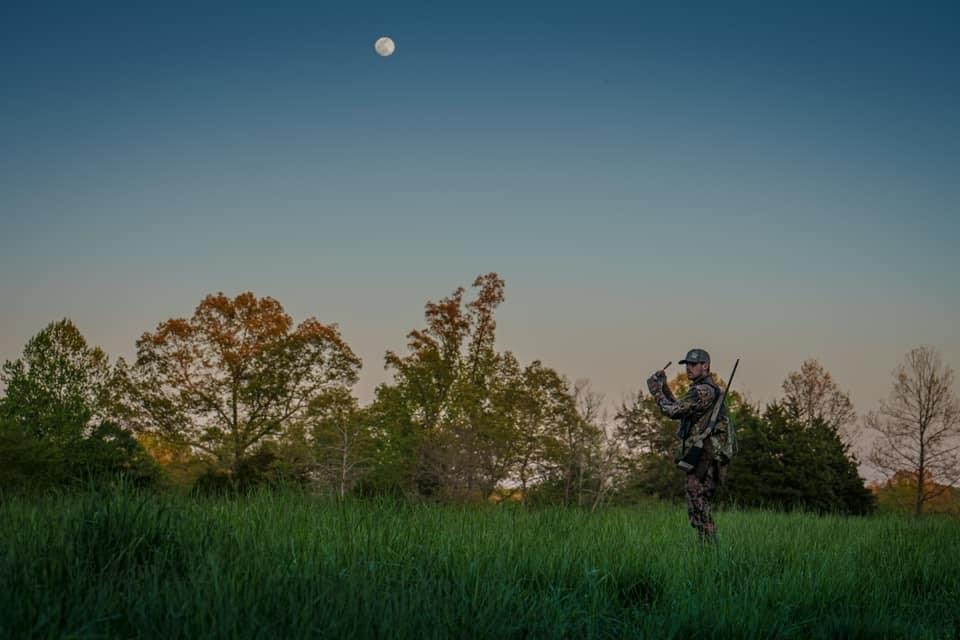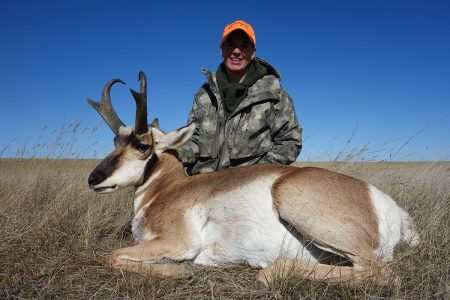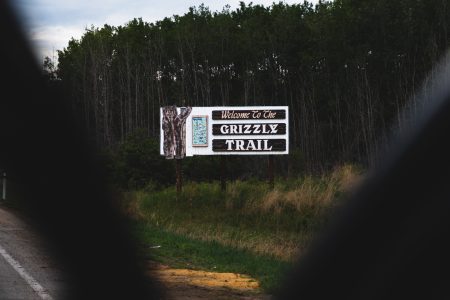A dank familiar aroma filled the air. It’s one that goes hand-in-hand with willow-laden muskeg bogs and the moose rut in Alberta.
Accompanied by yellow leaves wafting to the ground and the promise of calling in a big bull, this scene put a spring in my step. I’d already invested several days with little to show for my efforts, but experience had taught me that things were about to change.
It was September 29, and one of my four favorite days to hunt moose. Why? Year over year, I’ve learned that where I hunt, the estrus kicks in at this time, and one or more bulls always show up looking for a hot cow. In the heart of a dense old-growth forest, bordering a muskeg willow flat, I was in moose heaven.
As if straight out of a Robert Bateman original, I couldn’t have chosen a better spot to hunt. Game trails were so pronounced that I’d opted to put up a tree stand overlooking a well-traveled intersection, sneak in under the cover of darkness, hit my cow call, and wait. As can be all too common with moose hunting, the silence was deafening. There were no distant grunts or moans. Nothing. I’d placed my Montana decoy strategically, in hopes of drawing in a bull to bow range. Only a short while after sunrise, and motionless and straining to hear a response, I moaned like a lovesick cow ready to be bred. Then it happened. I heard a branch snap. Initially dismissing it, less than 10 minutes later I caught movement 30 yards away. Slowly and silently ghosting through the timber, a cow was followed close behind by a bull.
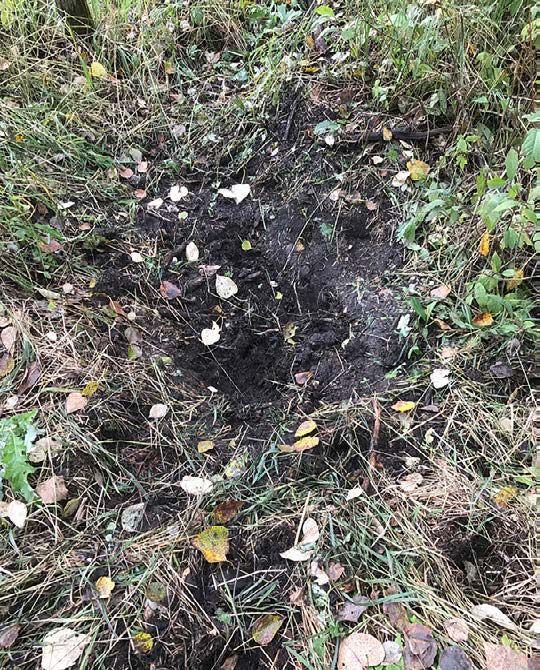
Mesmerizing Moves
Moose are big and unimaginably nimble, averaging 1200-1500 pound and getting as much as 1800 pounds for a world record moose. Their ability to move so quietly is mesmerizing. Stopping just 18 yards from me, the cow sniffed the ground. I think she may have caught a whiff of my boot track; I’m not sure. Preoccupied, the bull capitalized on his opportunity to sniff her hind end. Licking his lips and nose, it was clear that this cow was either in heat or about to come into heat. He was obviously checking her for breeding readiness, and it was amazing to watch, even though I knew my window of opportunity may be short. They were so majestic, yet so silent with every move.
Oddly enough, neither of them acknowledged my decoy as the cow turned and skirted to my left. Focused on her, the bull slowly but intently followed behind. With his head turned slightly away, I recognized my opportunity. In one fluid moment, I drew, anchored and aimed. A 21- yard chip shot allowed me to send my Easton FMJ and G5 Striker V2 on its way.
With little more than a meager thump, the shaft passed through low in the bull’s chest just behind the shoulder. In what appeared to be little more than a modified sprint, he trotted 40 yards and stopped. I thought he’d topple right there, but he didn’t. He was obviously weakening, and to my surprise minutes later, he slowly trotted off and vanished into the trees. So, I waited 45 minutes then climbed down and began tracking. Thankfully I found him piled up not much further down the game trail.
The most interesting thing to me was the date when this occurred. Between my wife and I, and many of our friends, we’ve all taken a number of bulls during the peak of the rut. In turn, I’ve concluded that if I have limited days off to hunt moose, I would do everything I could to be in the woods during four very specific days.
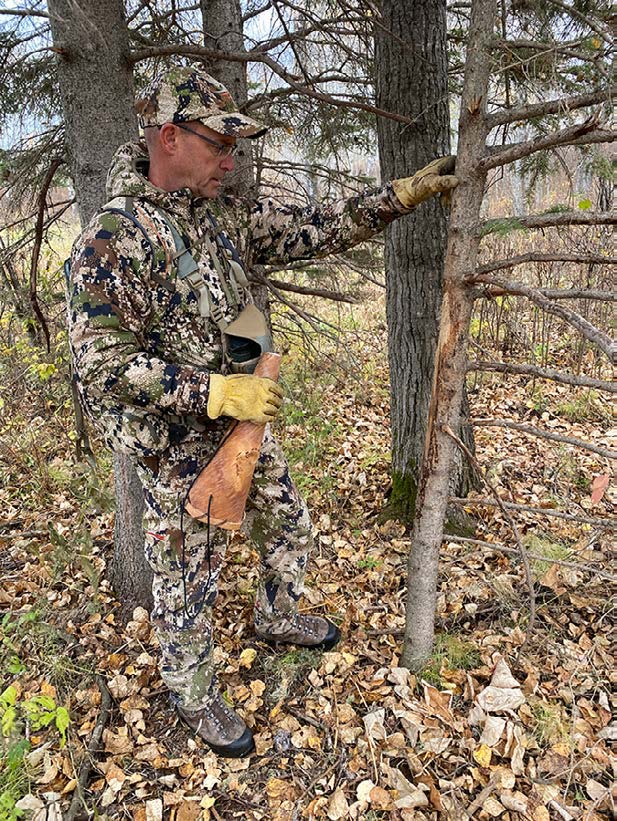
Timing the Rut
With Alaskan moose in northern jurisdictions like Alaska, the Yukon and Northwest Territories, timing of the moose rut can be a week to 10 days earlier. If we’re talking about Canada moose, by virtue of latitude and geographic distribution, their rut cycle follows a similar timetable from east to west across Canada and the northern United States.
Like other ungulates, North America’s largest member of the deer family progresses through its annual breeding season like clockwork. It occurs through a general three-week cycle from late September to mid-October. Experienced moose hunters know that the youngest bulls will start responding to cow calls around September 23, and sometimes earlier. With each successive day, the rut activity increases. Essentially the pre-rut, or window of time prior to the first estrus, is roughly between September 20 and 28.
Each and every year, without exception, September 29 reveals a marked increase in moose rut activity, and bulls can be seen working cows. For the next four to eight days, the action can be really good. For my money, September 29 to October 2 are the four days that I really prefer to be in the woods looking for a moose. Essentially, the majority of cows will go into heat between September 29 and October 6, with stragglers going into heat during the following days after as well.
This isn’t to say that the days prior to, or following, those prime dates can’t be good as well. I’ve called in lots of bulls both before and after those dates. In fact, I’ve had some phenomenal calling action between October 3 and 10, with bulls readily coming in to check out a breeding prospect. But, if I only had four days to hunt, I would definitely pick the last couple days of September and first couple days of October. Here’s why.

Find the Sign, Find the Moose
To increase your odds of tagging a moose, first find where they hang out. I know many hunters who return home empty-handed, mostly because they didn’t do the research to choose a high-odds area. Effective deer hunters know to look for good habitat with lots of sign.
Find concentrations of both bull and cow tracks, old and new droppings and rut sign like rubs and rut pits. These are patches of ground dug up where bulls and cows will urinate (in a loose sense, comparable to Whitetail scrapes). If you find those, chances are you’re in the zone. Sign will be increasingly evident the closer you get to the estrus and just afterward, as bulls will be traveling more in search of hot cows.
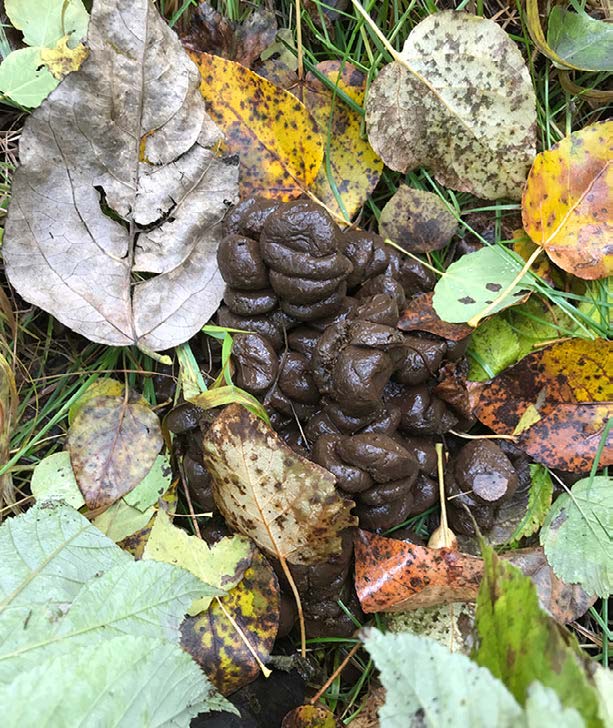
Focus on the Cows
So, how can you use this situation to your advantage? It’s inevitable that if you find a cow moose, a bull will show up during these peak estrus days. You may not be able to shadow her around the clock, but you can certainly work the area where she’s living. Cows typically have a smaller home range or a familiar area where they spend their time. Locate where they’re hanging out and there will be bulls scouring the area to find them. Survival of the species literally depends on it. I learned many years ago that as long as I spend time and call consistently in proximity to known cow moose, my odds of attracting a bull go way up.
Moose are where you find them, but certain habitats tend to hold higher densities than others. Prime moose habitats include wet areas along creeks running through muskeg bogs, willow flats, and old-growth mixed forests. Moose can be also be found in a variety of different biomes, including aspen parkland, boreal forest, foothills, and even many prairie grassland regions across Canada and the northern United States.

Vocalizations and Maneuvers
Moose are known to be reclusive and elusive most of the year. Like other ungulates though, it’s during the peak of the rut (and my preferred four days in particular) that the calling action can be at its finest!
Best-case scenarios involve cow calling (i.e., moaning) and a bull grunting back consistently, then plodding in on a string. Unfortunately, that doesn’t happen every day. Sometimes they’ll slip in to inspect your calls without hardly making a sound.
In most situations, you can use a cow call to locate and attract a bull during these peak rut days. But, when one hangs up, several tricks can be used to pique his interest and prompt an aggressive response. Regardless of whether you are gun hunting or bow hunting, calling in pairs is most ideal. This plan has the shooter set up downwind 30 yards from the caller, and in the area where you anticipate the bull might show himself. Bull moose are notorious for showing interest, then stopping 50 yards away. If a bull hangs up, one trick involves interspersing cow and bull calls to suggest that the cow is in estrus, and that the bull will have competition. The other involves using something like a moose scapula, a shed antler, a paddle, or even a large stick to rake branches and scrape the bark of a tree. This gesture proclaims dominance and conveys aggression. In many instances, this serves as a challenge and brings the bull in for a closer look, or even for a confrontation.
Decoy Adds a Visual Stimulant
During these favorite four peak rut days, remember that bulls are on the prowl and they want to breed. When they hear a cow moaning, they are interested. Although many use caution as they approach the sound, adding a visual stimulant to your calling set-up can help you close the deal. Moose often readily respond to familiar vocalizations and the prospect of a ready breeding partner. By placing a cow moose decoy within shooting range and in a visible position, you can increase your odds of drawing in a bull. Montana Decoy makes an ultra-lightweight one- dimensional cow moose decoy. Folding down to a 20- inch circular bundle, it’s easy to pack and just as simple to put up and take down. I’ve seen great success with their Moose II decoy. It only weighs 48 oz. and uses leg poles to keep it upright. Standing 66 inches in height, it has an undeniable presence. The key is to place it in a visible location that any incoming bull can readily see within at least 50 yards. When available, I really like setting up in open aspens. Especially effective during the estrus, a cow decoy can hold a bull’s attention, giving you valuable time and opportunity to make the shot.
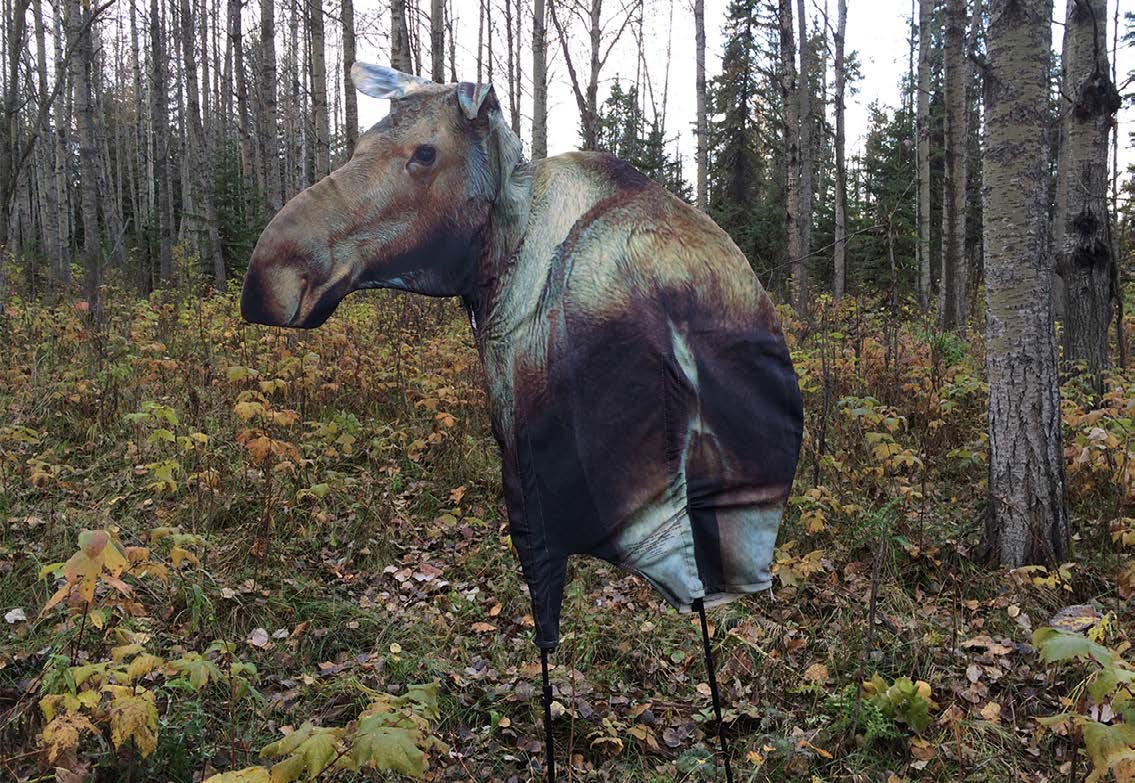
Be Patient
Now and then, bulls will eagerly race to a call, but that is more often the exception than the rule. Even during these four first- pick estrus days when the action can and should be at its finest, it can seem slow—especially if you compare it to the Whitetail rut. I’m an impatient hunter myself, so I often move a lot and call frequently, continually probing until I get a response. I can tell you this is often the wrong thing to do. Regardless of your own approach, one thing is certain: Moose are unbelievably patient creatures. Most of their world involves slow and methodical movement. To score, even during the best days of the year, patience is a virtue and will almost always pay off in the end.
Per our affiliate disclosure, we may earn revenue from the products available on this page. To learn more about how we test gear, click here.






